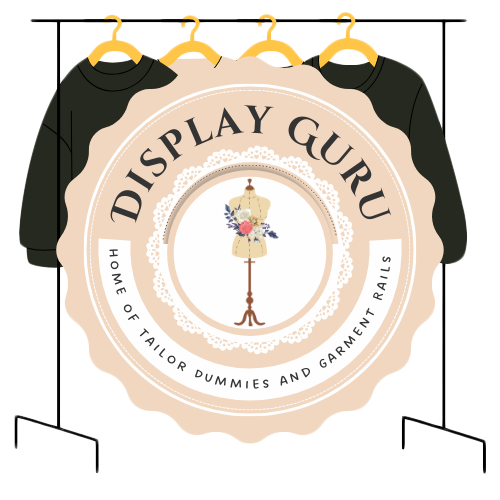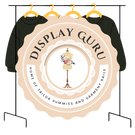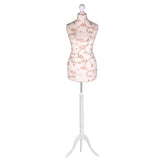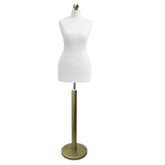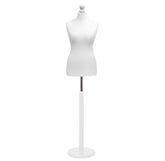Adjustable Mannequins for Sewing Your Perfect Fit
An adjustable mannequin is one of those game-changing tools for sewing. Think of it as your personal 'body double', letting you create a perfect stand-in for fitting clothes. It gives you a 360-degree view of your project—a luxury you just don't get when trying to fit something on yourself. This is what makes them so invaluable, whether you're sewing for clients, different family members, or even just for your own changing shape.
Your Silent Partner in Perfect Garment Fitting

Have you ever tried to pin a perfectly straight hem on a skirt you're wearing? Or what about checking the drape of a back panel by craning your neck in the mirror? We’ve all been there. These frustrations highlight the one big challenge in sewing: you can't be both the maker and the model. This is exactly where an adjustable mannequin steps in, transforming from a handy tool into an essential creative partner.
It's like having a silent collaborator, standing patiently while you drape, pin, and tweak your designs to perfection. Unlike a professional dress form, which is usually made to a rigid industry standard size, an adjustable mannequin is all about versatility. It can be dialled in to match very specific body measurements, giving you a truly realistic canvas for your work.
The Advantage of Adaptability
At its heart, the main job of adjustable mannequins for sewing is to take the guesswork out of fitting. They give you the power to see exactly how fabric will hang and behave on a three-dimensional form that actually reflects real-world proportions. This is what makes the difference when you're aiming for a professional finish, whether you're a hobbyist or a seasoned designer.
Here's where they really shine:
- Precision Fitting: You can set the exact bust, waist, and hip measurements to match a specific person, ensuring the finished garment fits like a glove.
- Effortless Draping: It's so much easier to experiment with fabric directly on the form, letting you create unique patterns and shapes without needing a live model.
- Simplified Alterations: Spotting and fixing fit issues, like a gaping neckline or tight shoulders, becomes simple before you've even touched your final fabric.
- Consistent Results: You can work on a project over several days, totally confident that the 'body' you're fitting to hasn't changed.
This is the kind of customisation that elevates a garment from simply homemade to beautifully tailored.
An adjustable mannequin isn't just a stand-in for a body; it's a stand-in for your specific body, or your client's. It holds the unique curves, proportions, and posture that make a garment truly bespoke.
More Than Just a Fitting Tool
Beyond its day job, a good mannequin quickly becomes a key part of your creative space. It helps you visualise the final piece, play around with fabric pairings, and even serves as a lovely display for your finished projects. When your mannequin is at the heart of your workspace, it can completely transform your workflow. For more tips on this, you might find our guide to creating the ideal sewing room setup helpful.
Ultimately, getting an adjustable mannequin is an investment in your own accuracy and creativity. It gives you the solid, reliable foundation you need to take on more ambitious projects, turning the often-fiddly process of fitting into a genuinely enjoyable part of sewing.
What Makes a Great Sewing Mannequin Tick?
Not all adjustable mannequins are built the same. When you're on the hunt for the perfect sewing partner, you need to look beyond the basic spec sheet to understand what really separates a dependable workhorse from a wobbly, frustrating piece of plastic. Let's get under the skin of these forms and see what features truly matter for achieving a professional fit.

The whole point of an adjustable mannequin for sewing is its ability to change shape. This isn't just magic; it's a clever system of internal mechanisms controlled by a set of external dials or keys. These adjustment points are the heart of the mannequin’s versatility, giving you the power to sculpt the torso into a precise body double.
The Magic of the Adjustment Dials
The number of adjustment points is a big deal. It dictates just how closely the form can mimic a real human body. You’ll usually see mannequins with 8, 10, or 12 adjustment dials, each strategically placed to control the most important measurements for garment fitting.
Think of these dials as a team. You rarely adjust just one; you use them in concert to create a smooth, realistic contour. For instance, the bust measurement is often managed by four separate dials that expand the chest and back independently. This gives you a much more nuanced and accurate shape than a single, clunky adjustment ever could.
These key adjustment areas typically include:
- Bust: Absolutely crucial for getting a perfect fit across the chest, eliminating any gaping or pulling.
- Waist: Essential for tailoring dresses, blouses, and jackets to create that all-important defined silhouette.
- Hips: The key to fitting skirts, trousers, and gowns, making sure they drape beautifully over the lower body.
- Neck: A surprisingly useful feature for fitting collars and necklines with precision.
A great mannequin lets you make tiny, precise changes. The dials should turn smoothly, expanding the internal sections evenly without any jarring jumps. This level of control is what makes a reliable body double. To get it just right, it helps to learn about taking accurate mannequin measurements for a perfect match.
The Non-Negotiable: Back-Waist Length
Here’s a feature that’s often overlooked but is absolutely critical: the adjustable back-waist length. This measurement, running from the base of the neck down to the natural waistline, varies enormously from person to person. A mannequin that can't adjust this length will cause endless fitting headaches, especially with bodices and dresses.
If the mannequin's torso is too long or short for the body you're fitting, the garment will simply never hang right. An adjustable back-waist length ensures the form's proportions are as accurate as its circumferences. For any serious dressmaker, this is a non-negotiable feature.
A mannequin that matches your bust, waist, and hip measurements but has the wrong torso length is like a map with the right cities but the wrong distances between them. You’ll never reach your destination of a perfect fit.
The Surface Matters: Covering Materials
The material covering the mannequin is just as important as what’s inside, especially for draping and pinning. You need a surface that grips fabric gently without snagging it, while also letting you insert pins easily and securely.
- Foam-Backed Nylon: This is the go-to for a reason. The thin layer of foam under the nylon cover creates a "pinnable" surface. You can push pins straight into the form at any angle, which is a must-have for draping and pattern work. The nylon itself is durable and lets fabric glide smoothly over it.
- Traditional Fabric (Linen or Cotton): Often found on more traditional or professional forms, these covers have a classic look and feel. They’re fantastic for pinning, but make sure they're backed with something like foam or cork to give your pins something to sink into.
A quick word of warning: steer clear of mannequins with a hard plastic shell and no fabric cover. They might be fine for display, but they are completely useless for active sewing and fitting since you can't pin into them.
To help you weigh your options, here’s a quick breakdown of the features we’ve covered.
Key Mannequin Feature Breakdown
| Feature | What It Does | Why It Matters for Sewing |
|---|---|---|
| Adjustment Dials (8-12) | Expand and contract the mannequin's torso at key points like the bust, waist, and hips. | Allows you to create a precise body double for accurate garment fitting and alterations. |
| Back-Waist Length | Adjusts the vertical length of the torso from the neck to the waist. | Ensures the proportions are correct, which is critical for the fit of bodices, dresses, and jackets. |
| Pinnable Surface | A foam-backed fabric cover that allows pins to be inserted directly into the mannequin. | Essential for draping fabric, holding patterns in place, and making on-the-form adjustments. |
| Stable Stand | The base that supports the mannequin, available with a tripod or caster wheels. | Provides stability to prevent tipping while you work and allows for height adjustment and mobility. |
Choosing the right features from the start will make your mannequin a trusted tool rather than a source of frustration.
The Foundation: A Stable Stand
Last but not least, a great mannequin needs a solid foundation. The stand does more than just hold the form up; it provides the stability you need to pull, pin, and drape fabric without the whole thing toppling over.
There are two main types you’ll come across: a traditional tripod base and one with caster wheels. A tripod offers excellent stability, making it perfect for a dedicated sewing space where the mannequin will stay put. On the other hand, if your workspace is more fluid and you need to move the form around, a base with smooth-rolling casters will make your life much easier.
Think about your workflow. Whichever style you choose, just make sure the height is adjustable. Working at a comfortable, ergonomic height will save your back during those long fitting sessions.
How to Choose the Right Dress Form for Your Projects
Picking the right adjustable mannequin can feel like a huge commitment, but it doesn't have to be. Now that you know the key features to look for, the next step is to match them to your personal sewing ambitions. This is all about shifting from a general checklist to a decision that’s right for your body, your projects, and your budget.
Making a smart choice starts with you, not the mannequin. The most important first step is to take accurate body measurements. Get a tape measure and jot down your bust, waist, and hip circumferences, plus your back-waist length. These numbers are your roadmap to finding the perfect match.
Start with Your Size Range
With your measurements in hand, you can start comparing them to the size ranges of different mannequin models. Every form will list a minimum and maximum measurement for each of its adjustment points. Your own measurements should fall somewhere comfortably in the middle of that range, not right at the very edge.
This leads us to a golden rule when choosing adjustable mannequins for sewing: if you’re between sizes, always size down. It’s far easier to add padding to a smaller form to build it up to your shape than it is to work with a mannequin that’s too big, even at its smallest setting. A smaller form gives you a solid, customisable foundation.
Think of it like a sculptor starting with a block of marble. It's much better to have a piece you can add to and carve into the perfect shape, rather than starting with a block that’s already too big and can’t be shrunk.
This approach works so well because no adjustable form can perfectly mimic every unique curve of the human body, like a full bust or a swayback. Padding is how you bridge that gap, and starting with a smaller base gives you the creative freedom to do it accurately.
Match the Form to Your Function
So, what do you love to sew? Your answer is a huge clue to which type of mannequin you need. Not all forms are built the same; some are specifically designed for certain garments, so let your main projects be your guide.
Here are a few common scenarios:
- For Tops, Dresses, and Skirts: A standard torso form is your go-to all-rounder. It covers the essential bust, waist, and hip areas, making it perfect for most garment making.
- For Trousers and Jumpsuits: If you’re a keen trouser-maker, look for a mannequin with an offset pole or a bifurcated (legged) design. This feature lets the trousers hang naturally without the central stand getting in the way.
- For Full Gowns and Bridal Wear: A full-length mannequin, which extends much closer to the floor, is an absolute game-changer when you're working with long hemlines and dramatic trains.
The UK's fashion and textiles industry supports around 1.3 million jobs—a huge ecosystem where getting the fit right is everything. In a market with a growing appetite for bespoke clothing, tools like specialised mannequins that simplify the fitting process are more valuable than ever.
Consider Your Budget and Long-Term Goals
Finally, it’s time for a reality check on your budget and how much you’ll actually use your new sewing partner. For the occasional hobbyist, a solid entry-level model with 8-10 adjustment points and a pinnable surface will be a brilliant investment. You don’t need every bell and whistle from day one.
But if you’re a serious dressmaker, or you plan on sewing for clients, investing in a more robust model with 12 adjustment points, a back-waist length adjuster, and a sturdy wheeled stand is a very smart move. These features deliver a level of precision and convenience that will pay for itself over countless projects.
Feel free to explore a variety of dress forms for sewing to compare models and find one that fits both your craft and your finances. Ultimately, the right choice is the one that gives you the confidence to bring your creative ideas to life.
Setting Up and Customising Your Mannequin
The moment you unbox your new adjustable mannequin is always a thrill, but this is where the real work begins. Your mission is to transform this standard body form into a perfect replica of yourself or your client. It’s a hands-on process, a blend of careful mechanical tweaking and the nuanced art of padding to capture a body’s unique landscape.
Getting the initial setup right is all about patience and precision. It’s tempting to dial in the main measurements quickly, but that’s a shortcut to an uneven form and can put a real strain on the internal mechanism. The trick is to make small, gradual adjustments, working your way around the body form methodically.
The Art of Incremental Adjustments
Think of it like tuning a guitar. You don’t just crank one string all the way to the right note; you make small turns on each one, bringing them all into harmony together. The same principle applies here. Start by setting all the dials to their smallest measurement, and then expand them bit by bit.
Here’s a simple process that always works for me:
- Start with the Waist: Gently turn the waist dials, adding just a centimetre or two at a time. Go from one dial to the next to keep the expansion even.
- Move to the Hips: Once the waist is set, begin adjusting the hip dials using that same slow and steady approach.
- Adjust the Bust Last: Finally, expand the bust measurements. Pay close attention here to keep the front and back expanding in balance.
- Check and Refine: Keep a tape measure handy and check your progress as you go. Continue making those small, even adjustments across all the dials until you hit your target numbers.
This methodical approach is your best defence against warping, ensuring the mannequin keeps a smooth, natural silhouette. It’s a crucial first step that prepares the form for the more detailed customisation to come.
The Real Magic: Padding Your Mannequin
Even the most sophisticated adjustable mannequins have their limitations. They’re designed around a fairly idealised, symmetrical hourglass figure—something very few of us actually have. This is where padding becomes your secret weapon, allowing you to replicate unique body shapes with incredible accuracy.
Padding is the bridge between the mannequin's basic measurements and the body's true form. It’s how you account for the subtle curves, asymmetries, and postural details that make a bespoke garment fit like a dream.
You don’t need anything fancy to get started. You can use professional padding kits or simple materials from around the house. The goal is simply to build up specific areas so the form truly mirrors the body it’s meant to represent.
This infographic lays out the core steps, from taking measurements to final customisation.
As you can see, the process always flows from accurate measurement to careful padding, reminding us that numbers alone are never enough for a truly bespoke fit.
Creating a Second Skin
To keep all your padding securely in place and create a smooth working surface, you’ll need a custom-fitted cover. Many of us in the industry call this a "second skin." It's essentially a stretchy fabric shell, like a very tight-fitting T-shirt, that you pull over the entire padded form. It smooths out any lumps and bumps from the padding and gives you a consistent, pinnable surface to work on.
Some of the most common areas that benefit from custom padding include:
- A Full Bust: Foam bra cups or layers of wadding are perfect for building up the bust area to the correct size and shape.
- Rounded Shoulders or Back: Shoulder pads or layers of felt can be strategically placed to mimic a rounded upper back or forward-sloping shoulders.
- Swayback: A small foam pad placed right at the small of the back can replicate the curve of a swayback, a detail that’s absolutely critical for fitting skirts and trousers properly.
- Asymmetrical Hips: It’s very common for one hip to be slightly higher or fuller than the other. You can use padding to build up one side for a perfectly balanced fit.
Once you’ve padded your form and fitted its second skin, you’ve essentially created a true body double. This customisation is what takes an adjustable mannequin from being just another tool to an indispensable partner in your sewing projects. Of course, the stability of your mannequin is just as important as its shape; ensure you have a reliable foundation by exploring options for a high-quality dress form stand.
Unlocking Advanced Draping and Pattern Alterations
https://www.youtube.com/embed/nMlMmZBbeBs
Once you’ve dialled in your mannequin to perfectly match a specific body, it stops being just a fitting tool and becomes a powerful partner in your creative process. This is where you move beyond simple adjustments and start exploring more advanced techniques, like draping and tackling pattern alterations before you even pick up your scissors. It’s a game-changer for designing and tailoring with real confidence.
The Art of Draping on the Form
Draping, which you might also hear called moulage, is the craft of creating a garment pattern by sculpting fabric directly onto the dress form. Instead of working with flat paper, you pin, fold, and shape the material right on the mannequin to bring your design to life. It’s an incredibly intuitive way to develop organic shapes, elegant cowls, or intricate gathers that are often tough to imagine on a flat pattern.
Your adjustable mannequin acts as your creative canvas here. It gives you immediate feedback on how different materials will hang and drape, letting the fabric itself guide your design. To really get the most out of draping, it helps to have a good grasp of understanding the weights of fabric and how that influences a garment's final look and feel.
Spotting Fit Issues Before You Cut
One of the smartest ways to use your mannequin is to do a 'test fit' with a commercial pattern before you touch your good fabric. Forget just holding the paper pieces up to your body; pinning them directly onto your customised dress form tells you so much more.
This one simple step can instantly highlight potential fit problems that are easy to miss when you're just looking at a list of measurements.
Here’s what you can check in a glance:
- Bust Point Alignment: Does the pattern's apex land at the fullest part of the bust on your mannequin? If it’s off, you know a bust adjustment is on the cards.
- Shoulder Seam Position: Is the shoulder seam sitting correctly on top of the shoulder, or is it sliding forwards or backwards?
- Dart Placement: Are the darts pointing to the right place and finishing where they should to create a smooth, flattering shape?
- Back Curvature: Does the back pattern piece lie smoothly? Or does it pull tight across the shoulder blades or pool at the small of the back? That's a classic sign you'll need a swayback adjustment.
Catching these issues on the form means you can alter your paper pattern with confidence, long before you risk wasting a single inch of your final fabric. If you're new to working with patterns, getting to grips with all the symbols and markings is the first step. It's well worth learning https://www.displayguru.co.uk/blogs/news/how-to-read-sewing-patterns to make this process even smoother.
Using your mannequin to check a pattern is like having an expert tailor looking over your shoulder, pointing out exactly where to make tweaks before you make an irreversible mistake.
A Tool for the Entire Creative Journey
Your dress form is so much more than a technical tool; it’s a core part of your entire creative workflow. Use it to try out fabric combinations, pinning different textiles together to see how the colours and textures play off one another. And of course, it's the perfect model for photographing your finished work, showing it off professionally from every angle.
This versatility makes an adjustable mannequin a truly essential piece of kit for any modern dressmaker. The UK's textile manufacturing industry is on an upward trend, with the market projected to grow at a CAGR of 2.33% between 2025 and 2029. This growth signals a real need for tools that boost both efficiency and customisation in a flourishing creative sector. For more details on this, the UKFT.org website offers fantastic insights into the UK textiles market.
Common Questions About Adjustable Mannequins
Even with all the research in the world, a few practical questions always pop up once you get your new sewing partner home. Getting these sorted will give you the confidence to dive in and get the best possible results from your projects.
Let's tackle some of the most common queries I hear from fellow dressmakers.
Can I Use an Adjustable Mannequin for Trousers?
Yes, you definitely can, but you'll need the right kind of mannequin. This is a classic trap for new buyers. Your standard dress form with a pole running right up the centre makes fitting trousers a real headache.
For trousers to hang properly, you need a mannequin with an offset pole. This simple design difference moves the stand to the side, letting both legs of the trousers fall naturally. Some high-end models even have a bifurcated (split-leg) form, which is the gold standard for tailoring trousers, shorts, or jumpsuits. If bottom-half garments are a big part of your sewing, make sure this feature is on your checklist.
Fitting trousers well is a game-changer for so many of us. An offset pole isn't just a nice-to-have feature; it's absolutely essential if you're serious about getting a professional-looking fit below the waist.
What if My Measurements Fall Between Two Sizes?
This happens all the time, and the answer is simple: always go for the smaller size. It might feel a bit backwards, but trust me, it gives you far more creative control.
You can easily add padding to a smaller mannequin to build it up to your exact shape, but you can’t shrink a form that’s too big to begin with. Starting with a smaller base gives you a solid foundation you can customise to perfectly mirror your own unique curves, posture, and even any slight asymmetries we all have. Think of the smaller mannequin as your blank canvas.
How Do I Properly Care for My Adjustable Mannequin?
A little bit of upkeep makes a huge difference in keeping your dress form accurate and functional for years. Here are a few simple habits to get into:
- Avoid Direct Sunlight: Just like any fabric, the cover on your mannequin can fade or become brittle over time if left in the sun. Find it a shady spot in your sewing room.
- Adjust with Care: When you're turning the dials, do it in small, even increments. Don't force them. This protects the internal mechanism and ensures the form expands evenly.
- Keep It Clean: A quick once-over with a lint roller is perfect for picking up stray threads and dust. For any marks, a gentle spot-clean with a damp cloth and mild detergent should do the trick.
- Check for Stability: Every so often, just give the screws on the stand a quick check to make sure they're tight. A stable mannequin is a safe and reliable mannequin.
At Display Guru, we offer a wide range of high-quality, adjustable mannequins built to meet the needs of every sewer. Come and explore our collection to find the perfect partner for your creative projects at https://www.displayguru.co.uk.
